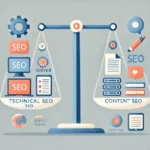In the fast-paced world of digital marketing, the importance of image optimization cannot be overstated. Images are not just decorative elements; they are powerful tools that can enhance user experience, improve search engine rankings, and boost engagement. As digital marketers, understanding how to effectively optimize images is crucial for achieving success in various online platforms.
The importance of image optimization lies in its ability to improve website performance. Slow-loading images can significantly impact user experience and lead to higher bounce rates. Therefore, optimizing images for faster loading times is essential to keep users engaged and satisfied.

What is Image Optimization?
Image optimization is the process of reducing the file size of images without compromising their quality. This involves using various techniques and tools to ensure that images load quickly while still looking visually appealing. By doing so, websites can provide a seamless experience to users and improve their overall performance.
Benefits of Image Optimization
1. Faster Loading Times
Optimized images load faster, which is crucial for retaining users’ attention. In today’s digital age, users expect websites to load within seconds. By reducing image file sizes, you can significantly decrease page load times and enhance user experience.
2. Improved SEO Rankings
Search engines prioritize websites with fast loading times. By optimizing images, you can positively impact your website’s SEO rankings. This can lead to increased organic traffic and better visibility in search engine results pages.
3. Enhanced User Experience
Images play a vital role in capturing users’ attention and conveying information effectively. Optimized images ensure that users can quickly access and view content without any delays. This enhances the overall user experience and encourages users to stay longer on your website.
4. Reduced Bandwidth Usage
By reducing the file size of images, you can minimize bandwidth usage. This is particularly important for users with limited data plans or slower internet connections. Optimized images help deliver content efficiently, ensuring that users can access information without excessive data consumption.
How to Optimize Images for the Web
1. Choose the Right Image Format
Selecting the appropriate image format is crucial for optimization. JPEG, PNG, and GIF are commonly used formats, each with its own advantages. Consider the nature of the image and the desired quality when choosing the format.
2. Compress Images
Compression is a key technique in image optimization. By reducing the file size, you can improve loading times without sacrificing quality. Utilize tools and software to compress images effectively.
3. Use Descriptive File Names
Descriptive file names provide context to search engines and improve image searchability. Instead of using generic names like ‘IMG1234’, use descriptive keywords related to the image content.
4. Implement Alt Text
Alt text is essential for accessibility and SEO. It provides a textual description of the image, allowing search engines to understand its content. Incorporate relevant keywords naturally within the alt text.
5. Utilize Responsive Images
With the increasing use of mobile devices, it’s crucial to ensure that images are responsive. Responsive images adapt to different screen sizes, providing an optimal viewing experience across various devices.
Tools for Image Optimization
Several tools are available to assist in image optimization. Some popular options include Adobe Photoshop, TinyPNG, and ImageOptim. These tools offer features like compression, format conversion, and resizing, making the optimization process efficient and effective.
Common Mistakes to Avoid
While optimizing images, it’s important to avoid certain pitfalls. Over-compression can lead to loss of quality, while using incorrect formats can result in larger file sizes. Ensure that images are properly optimized without compromising their visual appeal.
Case Study: Successful Image Optimization
Let’s explore a case study of a website that implemented effective image optimization strategies. By optimizing images, the website experienced a 30% increase in page load speed, resulting in improved user engagement and higher conversion rates.
Conclusion: The Vital Role of Image Optimization
In conclusion, the importance of image optimization in digital marketing cannot be underestimated. It plays a crucial role in enhancing user experience, improving SEO rankings, and driving organic traffic. By understanding and implementing effective image optimization techniques, digital marketers can achieve remarkable results and stay ahead in the competitive online landscape.

FAQ
1. Why is image optimization important for SEO?
Image optimization is important for SEO because it improves page load speed, enhances user experience, and increases search engine rankings.
2. What tools can I use for image optimization?
Some popular tools for image optimization include Adobe Photoshop, TinyPNG, and ImageOptim. These tools offer features like compression and format conversion.
3. How does image optimization impact user experience?
Image optimization improves user experience by reducing loading times, ensuring quick access to content, and enhancing overall website performance.







